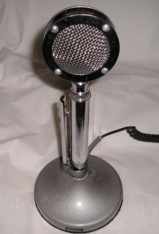
Figure 1. Components Used to Construct 50 Ohm Series Termination
Abstract: A shielded series 50
Ohm termination can be a useful addition to a troubleshooting kit. A
simple way to construct such a termination is presented.
Discussion: There are many uses for a series 50 Ohm termination (not to be confused with the parallel
50 Ohm termination used with some less expensive oscilloscope inputs).
One of these uses involves modifying the frequency response of current
probes. Another use is to match impedances. For instance, a 25 Ohm
resistor can be used to match a 50 Ohm load to a 75 Ohm source. Another
interesting use will be covered in the May 2009 Technical Tidbit next
month.
Figure 1 shows the three components used for this project, two BNC barrel adapters and a two Watt, 51 Ohm carbon composition resistor (47 Ohms will also work). In Figure 2, the three components have been pushed together to form one unit. The leads of the resistor have been trimmed to a length so as to properly seat in the BNC connectors. The resistor leads should cleaned to expose shiny metal and be tinned with solder. The tinned leads just fit into the BNC center pin holes of the barrel adapters.

Next, four pieces of 1/16th inch brass rod from a hardware store are soldered to the BNC barrel adapters as shown in Figure 3 to complete the ground connection between the BNC adapters and provide stiffness for the unit. Before soldering, use fine sand paper to remove the shiny coating on the BNC adapters to make soldering easier.

In Figure 4, the assembly has been wrapped in copper EMI tape to improve the ground connection between the BNC adapters. An inexpensive source of copper tape is described in the September 2000 Technical Tidbit on this site. The copper tape should be soldered to the BNC adapters to insure a good connection

Figure 4.Copper Tape Added Over Assembly to Improve Ground Connection
Finally, the assembly is covered with two layers of heat shrink tubing to produce the final unit in Figure 5.

Figure 5. Final Assembly of Series 50 Ohm Termination with Two Layers of Heat Shrink Tubing
Figure 1 shows the three components used for this project, two BNC barrel adapters and a two Watt, 51 Ohm carbon composition resistor (47 Ohms will also work). In Figure 2, the three components have been pushed together to form one unit. The leads of the resistor have been trimmed to a length so as to properly seat in the BNC connectors. The resistor leads should cleaned to expose shiny metal and be tinned with solder. The tinned leads just fit into the BNC center pin holes of the barrel adapters.

Figure 2. Components Joined to Form One Unit
Next, four pieces of 1/16th inch brass rod from a hardware store are soldered to the BNC barrel adapters as shown in Figure 3 to complete the ground connection between the BNC adapters and provide stiffness for the unit. Before soldering, use fine sand paper to remove the shiny coating on the BNC adapters to make soldering easier.

Figure 3. Four Wires Added to Connect the Grounds and for Stiffness
In Figure 4, the assembly has been wrapped in copper EMI tape to improve the ground connection between the BNC adapters. An inexpensive source of copper tape is described in the September 2000 Technical Tidbit on this site. The copper tape should be soldered to the BNC adapters to insure a good connection

Figure 4.Copper Tape Added Over Assembly to Improve Ground Connection
Finally, the assembly is covered with two layers of heat shrink tubing to produce the final unit in Figure 5.

Figure 5. Final Assembly of Series 50 Ohm Termination with Two Layers of Heat Shrink Tubing
Summary: The series 50 Ohm termination described here can
be constructed quickly and will be a useful addition to a
troubleshooting kit. Uses include impedance matching and current probe
frequency response modification. One unusual use for this termination
will be covered in the next Technical Tidbit for May 2009.
Additional articles on this website related to this topic are:
- Current Probes, More Useful Than You Think (~170K)
- (1998 IEEE EMC Symposium paper)
- September 1999: Measuring Voltages Using Current Probes
- March 2000, Improved Construction Technique for a 50 Ohm Termination
- July 2000, A Resistive Current Probe
- September 2000, Copper Foil Tape, Anyone?
- Fischer Custom Communications TG-EFT high voltage pulse generator (more on this next month)
Click here for a description of my latest seminar titled (now also available online as a WebEx seminar):
EMC
Lab Techniques for Designers
(How to find EMC problems and have some confidence your system will pass EMC testing while it is still in your lab).
(How to find EMC problems and have some confidence your system will pass EMC testing while it is still in your lab).
 |
My new website for engineers and technicians, CircuitAdvisor.com, is coming! The site will contain technews and analysis programs, cartoons, multimedia tutorials and more.The site will be open around May 1st. |
Home
